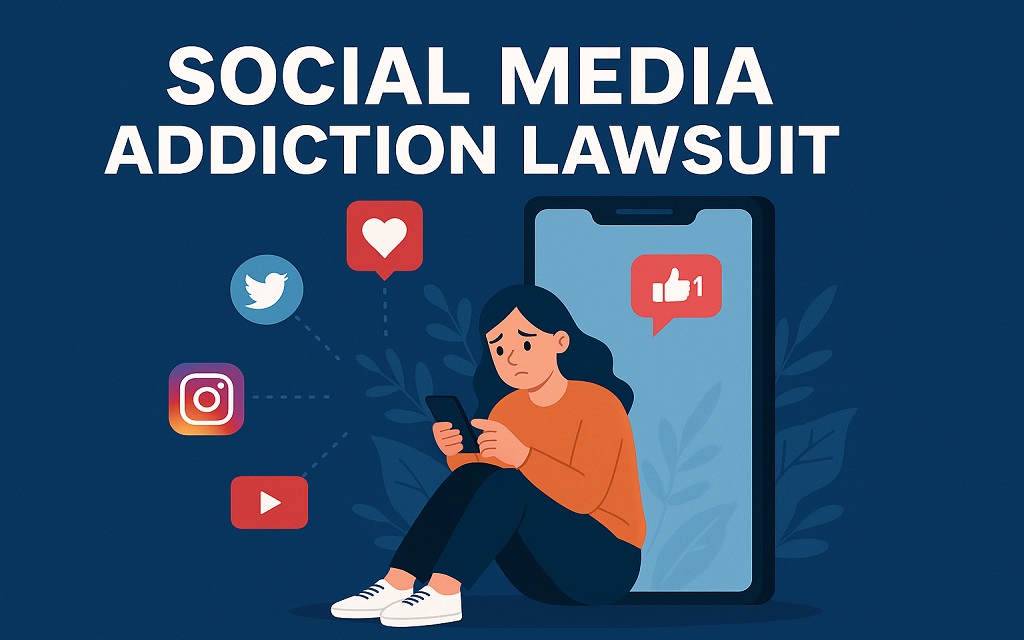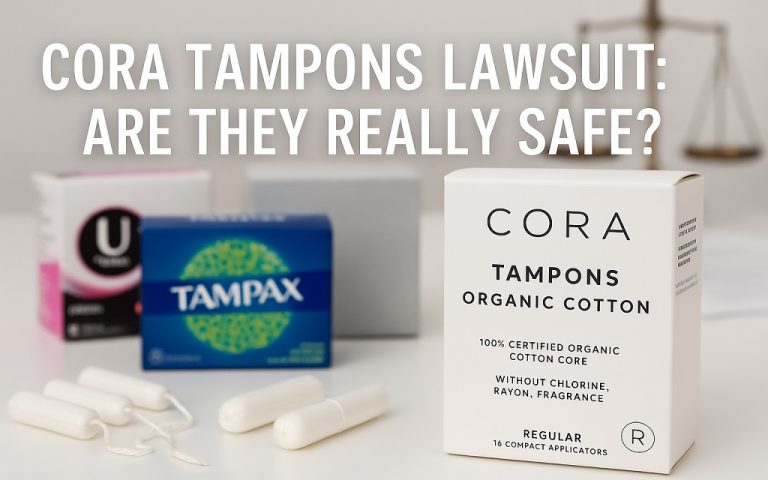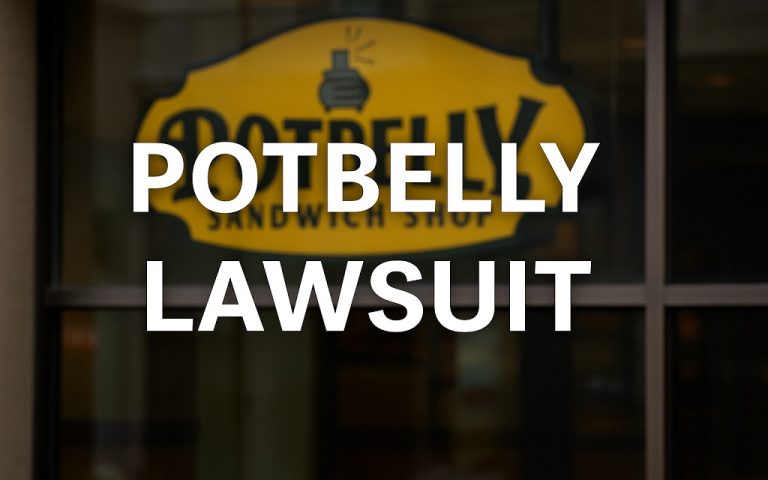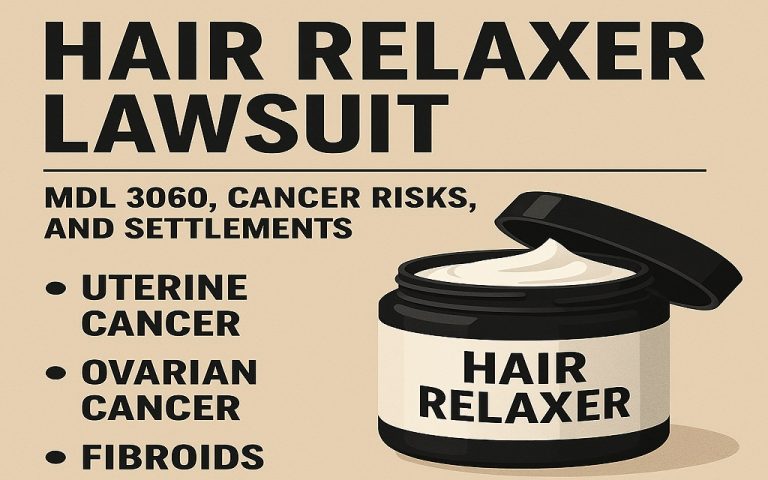You may hear more every day about the growing wave of lawsuits against major tech companies. Parents, schools, and families now ask tough questions about how platforms affect young people. A Social Media Addiction Lawsuit highlights the claim that design choices cause real harm.
You should know that more than 1,800 cases now form part of a federal multidistrict litigation. A Social Media Addiction Lawsuit focuses on addiction, depression, anxiety, and even wrongful death. You may wonder if you qualify for a Social Media Addiction Lawsuit yourself. You will find answers here and learn how courts treat such claims.
What Is a Social Media Addiction Lawsuit?
You may ask what a Social Media Addiction Lawsuit means in clear terms. You should know that a Social Media Addiction Lawsuit is a legal action filed by individuals, families, or institutions who claim harm from addictive design features on platforms like Facebook, Instagram, TikTok, Snapchat, and YouTube. Courts now review whether companies can be held accountable for mental health injuries caused by such designs.
It is essential to know that addiction in this context refers to compulsive use that disrupts everyday life. You should recognize signs such as depression, anxiety, sleep disruption, eating disorders, or loss of academic performance. A Social Media Addiction Lawsuit connects those injuries to features such as infinite scroll, algorithmic recommendations, and push notifications. Experts argue that such features act like digital triggers that trap users in harmful cycles.
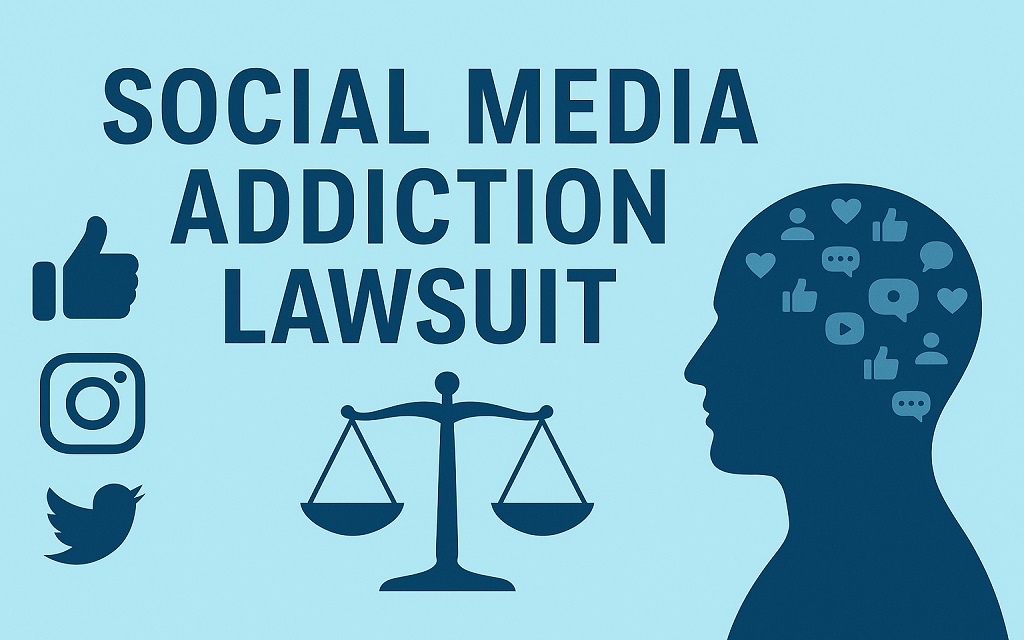
You may want examples of how claims take shape. Parents file lawsuits after children attempt dangerous TikTok challenges. Teens sue after developing eating disorders fueled by Instagram content. School districts claim financial harm from counseling costs and classroom disruption. Families file wrongful death suits after suicides linked to harmful content. Each type of case fits under the broad category of a Social Media Addiction Lawsuit.
You should also know that courts treat these lawsuits like product liability claims. Lawyers argue that addictive design counts as a defect. Judges begin to allow claims to move forward despite defenses based on Section 230 immunity. That legal shift marks a significant change in how courts treat technology companies.
Statistics highlight the scale of harm. The CDC reported in 2022 that 42 percent of teens felt persistent sadness or hopelessness. Pew Research reported that 95 percent of teens use social media and nearly half report use “almost constantly.” Lawyers cite such data as evidence that design choices play a role in public health outcomes.
You can see that a Social Media Addiction Lawsuit is more than a private claim. It represents a broader challenge to Big Tech. You should understand that the outcome may shape how social platforms function in the future.
Must Read: Gardasil Lawsuit: What You Need To Know
What Is Happening With Social Media Addiction Lawsuits?
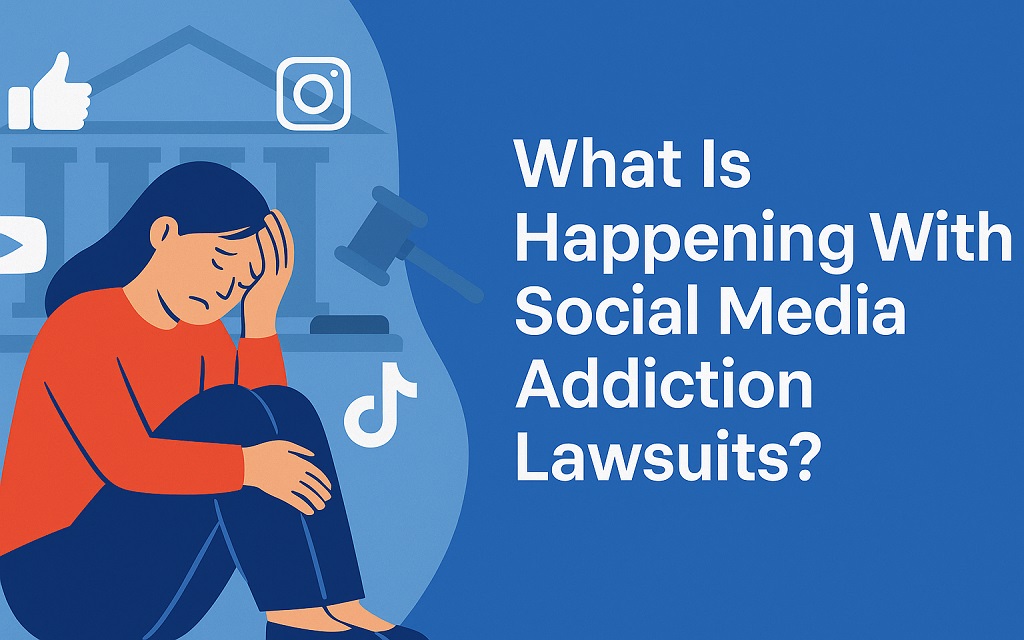
You live in an era where social media lawsuits dominate the legal conversation. You hear about cases against Facebook, Instagram, TikTok, Snapchat, and YouTube. However, you want to know why courts pay attention now. You want to know what makes these lawsuits different from earlier claims.
It is essential to know that more than 1,800 cases sit under a federal multidistrict litigation in California. You should also know that more than 200 school districts across the United States have filed related cases. You see claims from parents, teens, educators, and even state attorneys general. The defendants face allegations of addictive design choices.
You may ask why lawsuits focus on addiction. You may also ask how addiction qualifies as a legal injury. Courts hear arguments that platforms use infinite scroll, push notifications, and dopamine-driven algorithms. Experts present research showing that teenage mental health suffers under these conditions. In fact, a 2022 survey by the CDC found that 42 percent of high school students felt persistent sadness or hopelessness. Lawyers argue that such harm connects directly to corporate design.
You can compare this litigation to earlier public health battles. You remember tobacco lawsuits. Additionally, you remember opioid lawsuits. You may recall the Juul e-cigarette litigation that led to settlements worth billions. Lawyers argue that social media follows the same pattern. Companies profit while users suffer. Courts now examine that claim.
You should ask what makes the year 2025 different. Judges begin to allow product liability claims to move forward despite Section 230 defenses. Regulators highlight the role of algorithmic design in worsening teen mental health. Lawmakers propose stronger safety laws, such as the Kids Online Safety Act. So, you can see momentum build across all levels of government.
You may wonder if lawsuits will succeed. That question remains open. Some judges rule in favor of plaintiffs, while others dismiss claims. The process takes years. Yet momentum grows. Every month, more school districts join—every year, more families file.
So you stand at a moment of significant legal and social change. You see lawsuits expand. You see, the courts redefine what responsibility means in the digital age. However, you realize the outcome may shape how future generations use social media.
Who Can File a Social Media Addiction Lawsuit?
You may ask who qualifies to bring a case against social media companies. You may also wonder if only teens can file or if parents and schools qualify, too. Therefore, you need clear guidance before you consider legal action.
It is essential to note that the five main groups are currently filing claims. Each group shows harm differently. Each group highlights how addictive design choices affect society.
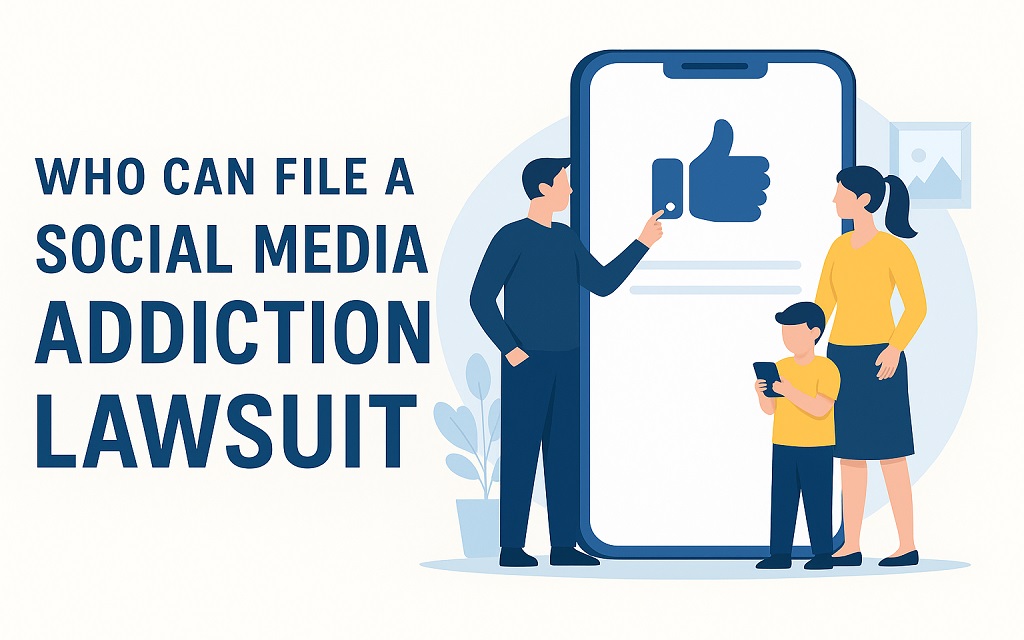
Teens and Young Adults under 21
You should know that many lawsuits involve young users who report depression, anxiety, or eating disorders. Courts hear that teenage girls suffer most from body image pressure on Instagram. A 2021 Wall Street Journal report revealed that Facebook knew about such harm. You may understand why lawyers use that evidence to support claims.
Parents and Guardians
You should see that parents often file on behalf of children. Some parents bring wrongful death claims. They argue that harmful viral challenges on TikTok and Snapchat contributed to the loss of their child. You may see examples where teens died during dangerous “blackout challenges” or “subway surfing.”
Families of Victims
You should also know that families file after suicide or overdose cases linked to harmful online trends. They seek compensation for funeral expenses and emotional trauma. Courts review such claims with great care.
School Districts
You may be surprised that more than 200 school districts now file claims. They argue that addiction creates classroom disruption. They also say that districts must spend millions on counseling and academic support. For example, several Texas districts joined together in 2024 to sue Meta and ByteDance.
State Attorneys General
You should note that states also bring consumer protection claims. Attorneys general argue that companies misled the public about safety. They demand changes to how platforms operate.
You see how wide the circle of plaintiffs has become. You see individuals, families, schools, and even states come forward. However, you should ask yourself if you fall into one of these groups. You may also ask what evidence you need to qualify. Later sections answer that question.
Must Read: Emotional Distress Lawsuit: A Complete Legal Guide
What Legal Grounds Support Social Media Addiction Lawsuit?
You may wonder how lawyers construct a case against companies operating massive online platforms. You may also wonder what legal rules apply. In fact, you need to know the grounds that courts recognize.
It is essential to know that plaintiffs rely on four main legal theories. Each theory connects to well-known doctrines in product liability and consumer law.
Negligence and Failure to Warn
You should know that negligence means a company has ignored a duty of care. Plaintiffs argue that platforms knew about the dangers of compulsive use. Internal documents show that executives saw reports about teen depression and body image issues. Yet companies failed to warn users or parents. Lawyers argue that such silence equals negligence.
Product Liability
You may hear that lawyers call platforms defective products. You may ask how software can be faulty. The answer lies in design. Features like infinite scroll and algorithmic feeds can be seen as unsafe mechanics. They hook users without natural stopping cues. Courts now allow such arguments to proceed despite strong defenses.
Fraud and Misrepresentation
You should note that families accuse companies of misleading marketing. Platforms claimed to offer safe environments for teens. Yet evidence shows they knew about serious risks. When a company misleads the public, courts may allow fraud claims to proceed.
Wrongful Death
You may hear about families who sue after a tragic loss. They argue that harmful challenges or algorithm-driven content contributed to suicide or deadly accidents. Courts treat such cases with seriousness and allow them when the evidence is strong.
Defendants rely on key defenses. The most common is Section 230 of the Communications Decency Act. You may recall that Section 230 shields platforms from liability for user content. Yet judges now distinguish between user content and product design. When plaintiffs argue about addictive design, courts may allow cases to move forward.
Companies also raise First Amendment claims. They argue that algorithmic choices count as free speech. Courts show skepticism toward such arguments. Judges focus more on consumer safety than on broad speech defenses.
You can see that the law is not settled. Some judges dismiss claims. Others let them proceed. You should follow updates closely, because rulings shift every month.
What Are the Most Important Social Media Addiction Cases?
You may ask what cases define the current wave of social media litigation. You may also want examples that show how courts respond. However, you should be familiar with several high-profile cases that have shaped the debate.
It is essential to know that the most significant development is the Multidistrict Litigation (MDL) in California. More than 1,800 cases sit under the supervision of a federal judge. Plaintiffs include teens, parents, and families. The MDL structure allows shared evidence and streamlined rulings. It mirrors earlier mass tort actions such as the opioid MDL. You may recall that opioid cases led to settlements worth billions. Lawyers expect the social media MDL to follow a similar path.
You should also be aware of wrongful death lawsuits associated with TikTok challenges. One major case comes from New York. A mother sued Meta and ByteDance after her son died while attempting the subway surfing challenge. A federal judge ruled that negligence and product liability claims could proceed. That decision set a powerful example for other courts.
You may ask about claims connected to eating disorders. A former athlete filed a lawsuit against Meta and TikTok. She argued that algorithmic design exposed her to content promoting anorexia. Her lawyers claim the algorithm reinforced harmful behavior until she needed medical treatment. That case now stands as one of the most detailed examples of algorithmic harm.
You should see that school districts bring cases on a large scale. More than 200 districts across Texas, California, Washington, and other states joined the litigation. They argue that addiction harms classroom focus and raises counseling costs. They also say that budgets cannot support the increased mental health demands. A 2023 report from the American Academy of Pediatrics found that teen depression rates doubled in the last decade. Schools cite that data in their filings.
You may also note that state attorneys general add pressure. Several states accuse platforms of misleading marketing and unfair practices. Those actions expand the scope beyond private claims and add government oversight.
You can see that each case adds new weight. You see families highlighting tragedy, schools highlighting costs, and states highlighting consumer rights. Together, they create a nationwide challenge that no company can ignore.
How Do Lawsuits Target Different Social Media Platforms?
You may ask if lawsuits treat all platforms the same. You may also want to know if some companies face stronger claims than others. So, you should see that each platform stands accused in different ways.
It is essential to note that Meta faces the highest number of claims. Facebook and Instagram both sit at the center of the MDL. Plaintiffs argue that Instagram promotes content that worsens body image issues among teen girls. A 2021 internal report showed that 32 percent of teenage girls felt worse about their bodies after using Instagram. Families use that evidence to argue that Meta ignored clear warnings. You may see why judges allow many claims against Meta to continue.
You should also know that TikTok, owned by ByteDance, faces lawsuits tied to dangerous viral challenges. Families blame TikTok for deaths linked to the blackout challenge and subway surfing challenge. Lawyers argue that TikTok’s algorithm actively promoted those videos to minors. Courts now examine if the product design made those harms foreseeable. TikTok also faces claims that late-night use leads to sleep disruption in teens.
You may hear that Snapchat faces lawsuits, too. Plaintiffs point to streak features and disappearing messages. They argue that such features create compulsive use and encourage risky behavior. Some families also claim that Snapchat enabled sextortion cases. One federal lawsuit links Snapchat’s design to the death of a teen targeted through the app. Judges must now decide how far liability extends.
You should note that YouTube, owned by Google, stands accused of pushing minors into harmful rabbit holes. Families argue that autoplay and algorithmic recommendations expose children to extremist or dangerous content. Lawsuits describe cases where minors watched hours of damaging videos without control. YouTube faces questions about why parental controls failed to prevent that exposure.
You may ask which platform carries the most legal risk. Lawyers argue that Meta faces the strongest claims due to extensive internal research. Yet TikTok and Snapchat face public outrage tied to youth deaths. YouTube faces pressure linked to algorithmic promotion. Each company defends its practices, but courts see patterns across all four platforms.
You can see that no company escapes scrutiny. You know each lawsuit highlights unique harms. However, you should understand that the legal system now views design choices as central evidence across all platforms.
What Compensation Can Plaintiffs Receive in Social Media Addiction Lawsuits?
You may ask what type of compensation victims can expect from a social media lawsuit. You may also want to know how courts calculate damages. However, you should learn about the categories that plaintiffs pursue.
It is essential to know that compensation covers several areas of harm. Lawyers focus on medical expenses, mental health care, pain and suffering, lost income, educational disruption, and wrongful death costs. Courts review each category carefully.
1: Medical and Therapy Costs
You should know that many teens require counseling, psychiatric care, or inpatient treatment. A 2023 report from the National Institute of Mental Health showed that nearly one in five teens faced a diagnosable mental disorder. Families argue that social media addiction raises treatment costs that companies should cover.
2: Pain and Suffering
You should also know that emotional trauma counts as a significant factor. Depression, anxiety, and loss of enjoyment of life lead to significant non-economic damages. Plaintiffs argue that constant comparison and harmful content worsened distress in measurable ways.
3: Educational Support
You may see claims from parents and schools for tutoring, counseling, and classroom disruption. School districts argue that budgets cannot handle the extra burden. They seek collective compensation for long-term academic harm.
4: Lost Income
You should consider that severe addiction may lead to job loss or reduced earning capacity for older plaintiffs. Lawyers raise such claims in individual cases.
5: Wrongful Death Damages
Families who lose children pursue damages for funeral costs, loss of companionship, and loss of future support. Courts often weigh wrongful death claims heavily due to their permanent impact.
You may ask how much compensation such cases bring. Lawyers compare them to mass tort settlements in opioid and vaping cases. For example, Juul Labs agreed to pay more than $1.7 billion to settle lawsuits by 2022. Experts argue that social media litigation may reach similar figures. Some predict individual settlements in the six- to seven-figure range. School district cases may rise into the hundreds of millions.
You can see that damages reflect both financial and emotional loss. You see families, schools, and states seeking accountability through monetary judgments. However, you should know that no settlement replaces lost health or life, but compensation offers relief and recognition.
Must Read: NEC Lawsuit: NEC Baby Formula Lawsuit Guide (2025–2026)
What Defenses Do Social Media Companies Use Against Addiction Lawsuits?
You may ask how powerful companies defend themselves in court. You may also want to know why some claims fail. However, you should understand the primary defenses that social media platforms use against addiction lawsuits.
It is essential to know that companies rely on three core arguments. They focus on Section 230 immunity, free speech protections, and causation challenges. Each defense aims to block claims before trial.
Section 230 of the Communications Decency Act
You should know that companies argue that Section 230 shields them from liability. They say the law protects platforms from responsibility for third-party content. Courts accepted that defense for decades. Yet judges now separate platform design from user content. You may see how this weakens the Section 230 shield in product liability claims.
First Amendment and Free Speech
You should also know that companies argue that algorithms represent protected expression. They frame recommendations as editorial judgment. Courts remain cautious about extending free speech protections to design features. Judges recognize the difference between publishing opinions and creating addictive mechanics.
Causation Challenges
You may see companies argue that mental health harm cannot be tied directly to platform use. They claim that depression, anxiety, or eating disorders arise from many sources. Defense teams say that proving addiction caused by design features remains too complex. Courts evaluate medical records and expert testimony to decide such claims.
You should consider that companies also question damages. They argue that schools cannot show measurable costs. They say that families cannot link medical bills to specific platform features. Also, they claim that plaintiffs overstate the role of social media in teen harm.
Statistics play a role in such defenses. In 2022, Pew Research reported that 95 percent of teens used social media. Defense lawyers argue that such broad use makes individual causation nearly impossible to prove. Plaintiffs respond that widespread use strengthens the case for systemic harm. Judges must balance both sides.
You can see that defenses remain powerful but not absolute. Some judges dismiss claims based on Section 230. Others let product liability claims proceed. You should follow rulings closely. Each decision sets a precedent that shapes future cases.
How Can You File a Social Media Addiction Lawsuit?
You may ask what steps you must take if you or your family suffered harm from social media addiction. You may also wonder how to join the larger cases already underway. However, you should understand the process before you act.
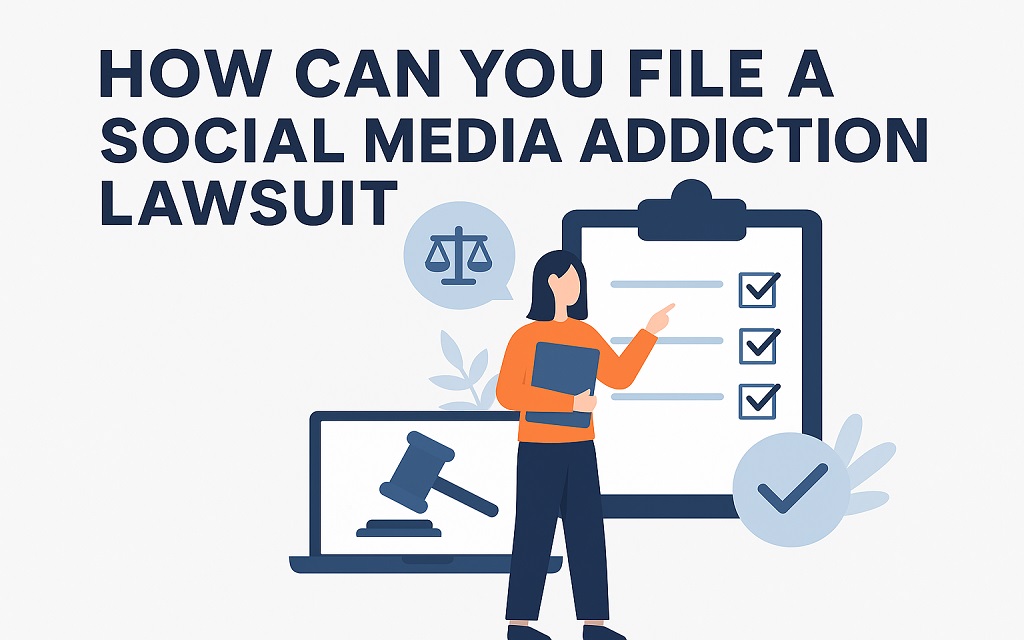
It is essential to know that filing a lawsuit requires careful preparation. Courts expect evidence, proper filing, and representation by an attorney with mass tort experience. You must move quickly because statutes of limitation apply in each state.
1: Document Harm
You should start by gathering medical records, therapy notes, and school reports. Such documents show how mental health or academic performance changed due to addiction. A 2023 CDC report revealed that 30 percent of teen girls considered suicide. Families use such data to connect personal harm to broader trends.
2: Track Usage History
You should also collect app logs, device history, and screenshots. Lawyers need proof of how long you or your child spent online. They also require proof of harmful content recommended by algorithms. That evidence helps establish design-based liability.
3: Consult an Attorney
You should contact a lawyer who handles product liability or mass tort cases. Attorneys can explain if you qualify for the federal multidistrict litigation in California. They also advise whether you should file individually or join a consolidated case.
4: File a Claim or Join the MDL
You should know that most individual cases now flow into the MDL. That structure allows shared discovery and joint rulings. Judges then decide which claims may proceed to trial or settlement.
You may ask how long the process takes. Lawyers estimate that mass tort litigation may stretch over several years. You should not expect quick results. Yet you may see early bellwether trials test legal arguments and guide settlement talks.
You should also know that families can file wrongful death lawsuits separately. However, some cases remain outside the MDL when unique facts apply. Attorneys can guide families through such exceptions.
You can see that preparation matters most. You must gather evidence. However, you must contact experienced counsel. You must decide if you qualify for the MDL. You should act early because delaying risks missing deadlines.
What Questions Do People Ask About Social Media Addiction Lawsuits?
You may want clear answers before you decide if a lawsuit fits your situation. You may also want to see how courts and lawyers respond to the most common questions. However, you should review the key points below.
Can you sue social media for addiction?
You should know that you can sue platforms such as Facebook, Instagram, TikTok, Snapchat, and YouTube. Federal courts now allow product liability claims to proceed. Judges rule that design choices like infinite scroll may support liability.
Who qualifies for a social media addiction lawsuit?
You should understand that claims often involve teens or young adults under 21. Parents and guardians can file on behalf of minors. Families may file wrongful death suits after suicide or accidental deaths linked to challenges. School districts and states also qualify as plaintiffs in related actions.
How many lawsuits exist in 2025?
You may be surprised to know that more than 1,800 cases sit in the federal MDL in California. More than 200 school districts have filed, too. Numbers grow each month as more families and institutions join.
What evidence do you need for a lawsuit?
You should provide medical records, therapy notes, school performance records, usage logs, and screenshots. You must demonstrate a clear connection between social media design and the resulting harm.
How much compensation can plaintiffs receive?
You should expect wide ranges. Individual cases may result in six-figure or seven-figure settlements. School district cases may reach hundreds of millions. Lawyers compare potential payouts to vaping and opioid settlements.
Do companies have defenses?
You should know that companies argue for Section 230 immunity, free speech protection, and lack of causation. Some judges accept those defenses. Others reject them and allow claims to proceed.
How long do lawsuits take?
You should expect a process that lasts several years. Mass tort litigation involves long discovery phases and bellwether trials. Settlements may arrive before final trials, but no quick timeline exists.
You can see that the answers show both opportunity and uncertainty. You see, courts recognize product liability claims. Additionally, defenses remain strong. You should weigh the facts and decide with legal guidance.
How Are Governments and Companies Responding to Social Media Addiction Lawsuits?
You may ask how governments react to lawsuits against social media companies. You may also want to know what steps platforms take to defend themselves or limit harm. However, you should see how both sides respond under public pressure.
It is essential to know that lawmakers at the federal and state levels now treat youth safety as a top priority. Congress debates the Kids Online Safety Act. That proposal requires stronger parental controls and algorithm transparency. Several states have passed laws that restrict late-night use by minors. In 2023, Utah approved a law requiring parental consent for teen accounts. You may see other states follow that path.
You should also know that state attorneys general add legal pressure. Attorneys general from California, Arkansas, and several other states file consumer protection lawsuits. They argue that platforms misled parents and children about safety. They demand penalties and reforms. Those actions run alongside private lawsuits.
You may ask how companies respond. You should know that platforms launch safety features under public scrutiny. TikTok added a sleep mode to limit nighttime use by minors. Meta rolled out prompts that tell teens to “take a break” after extended scrolling. Snapchat added parental dashboards that show contact lists and friend requests. YouTube created “supervised accounts” to limit algorithm recommendations.
You should consider that such measures do not erase legal risk. Lawyers argue that companies introduced changes too late. They claim that features aim to avoid liability rather than fix harm. Courts examine if new safety tools count as evidence of earlier knowledge of risk.
Statistics show why companies act. A 2022 Pew Research survey found that 46 percent of teens use the internet “almost constantly.” Mental health experts link constant use to higher rates of anxiety and depression. Public awareness now drives demand for stronger oversight.
You can see that lawsuits force governments and companies to act. You see laws proposed. Also, you can see new features rolled out. Yet you should ask if those steps truly protect young users or defend corporate image.
What Do Social Media Addiction Lawsuits Mean for the Future?
You may wonder what future changes will result from lawsuits against social media companies. You may also wonder how courts, families, and governments reshape the way platforms operate. So, you should see that outcomes carry significant social and legal consequences.
It is essential to know that lawsuits highlight design choices as central evidence. Courts now ask if infinite scroll, push notifications, and algorithmic feeds create foreseeable harm. Judges begin to treat such features like defective products. If rulings confirm liability, companies must redesign core functions. You may see time limits, stricter parental controls, and transparency rules become mandatory.
You should also know that mass tort cases shape industry standards. However, you may recall that tobacco lawsuits forced warning labels. You may also remember that opioid litigation forced billions in settlements and new monitoring systems. Legal experts argue that social media litigation follows the same pattern. Platforms may pay billions in damages and accept strict oversight.
You may ask how schools and families benefit. You should understand that compensation helps pay for counseling, tutoring, and treatment. Also, you should know that public awareness forces companies to acknowledge and address risks. A 2023 American Psychological Association report found that 27 percent of teens described social media use as “almost uncontrollable.” Courts now view such data as evidence of addictive impact.
You should also consider global consequences. European regulators already push for stronger online safety laws. Lawsuits in the United States may trigger similar changes worldwide. Companies may adopt safer global standards to reduce liability risk.
You may also wonder how long the process lasts. Experts predict years of litigation. Early trials called bellwethers will test claims. Settlements may follow after courts set patterns. However, you should not expect immediate closure, but you should expect steady pressure that shapes corporate behavior.
You can see that lawsuits reach beyond money. Also, you see, families demand accountability. You see, schools demand resources. You see, governments demand transparency. So, you should recognize that future generations may use platforms built under stricter safety standards.
Must Read: Potbelly Lawsuit: Washington Pay Transparency Case
FAQs
Is the social media addiction lawsuit real?
Yes, courts in the United States now hear active cases. Families, schools, and states file claims against major platforms.
What social media got sued?
Facebook, Instagram, TikTok, Snapchat, and YouTube face lawsuits. However, plaintiffs argue that design features caused serious harm.
Is social media addiction a real thing?
Yes, doctors and researchers confirm social media addiction as a real disorder. However, studies link it to anxiety, depression, and poor sleep.
Why is scrolling on social media addictive?
Scrolling activates the brain’s reward system. Platforms use infinite feeds and alerts to keep you engaged longer.
Conclusion – Taking Action Against Social Media Harm
You may wonder which steps are most crucial if you or your child experiences harm from social media use. You should focus on raising awareness, gathering evidence, and taking legal action regarding the social media addiction lawsuit.
It is essential to watch for warning signs, including changes in behavior, sleep, or school performance. Ask how much time your child spends online. Data shows that 95 percent of teens use social media, and nearly half use it almost constantly.
You should gather records. Keep medical reports, counseling notes, and device logs. Such evidence helps lawyers connect harm to addictive design.
However, you should contact an attorney early. Mass tort lawyers explain whether you qualify for the federal multidistrict litigation or an individual claim. Deadlines apply, and delaying can risk your right to file.
You can see that action begins with you. You must recognize harm, collect proof, and seek legal help. Your case supports accountability and helps shape safer platforms for future generations.
Disclaimer: This article provides a general overview of the Social Media Addiction lawsuit, based on publicly available information, and is intended for informational purposes only. It does not provide legal advice. You must consult a licensed attorney for any legal decisions.

